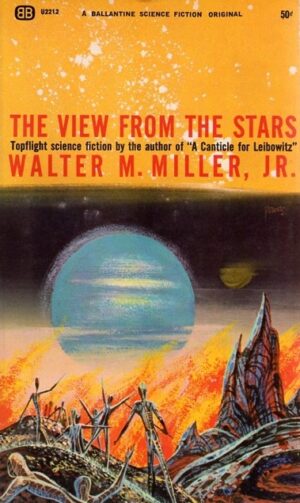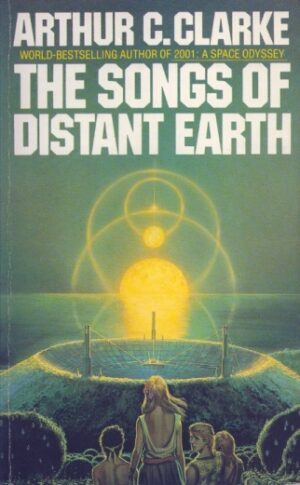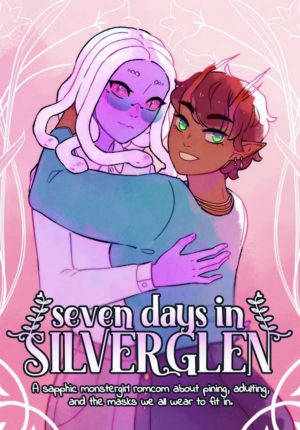Violence can be a very direct way to communicate. It will come as no surprise that violence can also be quite useful to authors—it’s the chili pepper in many plots.
But consider this: Quiet conversations can be just as dramatic. You can test this yourself simply by softly whispering to any significant others you might have “We need to talk.” Plots don’t require gunplay, or sword fights, or weaponized leaf blowers to entertain and enthrall readers. Consider these five works1.
The Men and the Mirror by Ross Rocklynne (1938)
Stalwart space cop Colbie has pursued charmingly roguish criminal Deverel across the Solar System. Episodes in this series usually feature plots that depend on the physics of unique planetary settings. Deverel always escapes, but Colbie is relentless.
Colbie arrives on the as-yet-unnamed planet Cyclops to discover that his quarry is deathly ill. Once Colbie solicitously nurses Deverel back to full health, the pair explore the planet’s dominant feature, a vast concave frictionless mirror onto which one would have to be foolish indeed to fall. Having fallen onto the mirror, the men discover that the mirror is almost but not quite frictionless. The mirror seems inescapable… but is it?
This was the third installment in the Colbie and Deverel saga. Taken on its own, it’s an acceptable problem-solving story. In the context of the other two stories, the effect is either comic or tragic: poor Colbie is fated to never quite catch Deverel2. This was also the final entry in the series, perhaps because the Solar System only has a limited number of physics-demonstrating settings in which the pair could be temporarily trapped.
“The Will” by Walter M. Miller, Jr. (1954)

(First published in Fantastic; collected in The View From the Stars) Doc Jules has doleful news for Rod. Rod’s stepson Kenny has leukemia. Without some miraculous medical breakthrough, Kenny is doomed. Nor will the boy and his family have long to come to terms with this death sentence. Kenny has at most months to live.
Terminally ill Kenny takes the long view. Current medicine can’t save him. Inevitable progress means that a cure will eventually exist. Bridging the gap between his present predicament and that distant future cure for it is merely a technical challenge for which Kenny has the key insight. (The key insight isn’t hexapodia, as surprising as that may seem.) Kenny understands something from which Anne McCaffrey’s Moreta would have benefited:
“But Dad, don’t you see? What difference does time make, if you’re working on a time machine?”
Which is why Kenny is, with Bill and Ted, on the list of time-travel aficionados to whom one must compare all time-traveler aspirants. If a traveler cannot match the ingenuity of one young boy or two teenaged dolts, they probably should not have a time machine.
The Songs of Distant Earth by Arthur C. Clarke (1986)

Perhaps the impending destruction of Earth and all on it provoked panic and mass violence… but not for the people of the ocean world Thalassa, fifty light-years from Earth. Provided a carefully curated version of humanity’s cultural heritage by the robot craft that decanted the first humans on Thalassa, the Thalassans are a bucolic, laid-back people who have found the perfect balance between procrastination and sloth.
Into this garden of Eden comes a serpent, in the form of slower-than-light starship Magellan. The sleepers on Magellan outnumber the Thalassans. The visitors possess superior technology. The visitors also have no intention of staying any longer than it will take to replace their debris shield, nor do they intend to greatly inconvenience the locals to do so. Thus, the only real issue is how to courteously manage the ensuing Terran-Thalassan romantic triangles.
There is an on-stage death in this novel but it’s the result of a mishap. Otherwise, everyone is terribly pleasant and polite, relentlessly non-confrontational. Perhaps it goes back to the local love of indolence. Why argue when one can just go fishing?
Twilight Star Sui and Neri by Pan Tokunaga (2020)

Inexpensive star flight and an abundance of easily settled planets have lured the majority of Earth’s people off-world. The few people remaining on Earth are insufficient to maintain, less alone increase, Earth’s infrastructure. Thus, these few are doomed to inexorable, albeit genteel, decline. Having known nothing else, this does not concern either Sui or her elder brother Neri (who is a talking sloth).
Off-worlder Shida takes a room at Sui and Neri’s Kutsurogi-no-Yado inn. What follows is a largely carefree exploration of Sui and Neri’s bucolic hometown, Tetsunagi.
It’s not so much that Earth in general is an impoverished utopia, but that Tetsunagi is. In fact, it’s pretty clear that had Pan Tokunaga wanted a kidnap and rescue plot, the means to provide it existed. The author did not, thus the amiable tale that ensues.
Seven Days in Silverglen by walkingnorth (2022-onward)

In a world much like ours, populated by creatures of myth, dryad Mira has a problem. Mira wants to join her relatives for the autumnal celebrations in Silverglen. Mira would like to avoid her family’s incessant efforts to interfere in single Mira’s romantic life, or lack thereof. The logical solution? Ask a co-worker to pose as Mira’s girlfriend for the duration of the celebration.
Gorgon Tess is the perfect candidate, save for one or two facts of which Mira is unaware. Tess is painfully shy. Tess is painfully infatuated with Mira. Tess is also entirely sensible, which is why after less consideration than one might expect, she decides to confront her anxieties and agree to Mira’s request. What could possibly go wrong?
One of the contributing factors to Tess’ social anxiety is that one of the features her world shares with ours is bigotry. Some races are considered more equal than others. Gorgons are down at the bottom of the pecking order.
While there are fewer SFF works that eschew gunplay and other forms of intentional violence than those that lean into violence, there are far more examples than the five listed above. Please regale us with particularly fine examples in the comments below.
